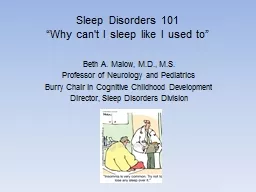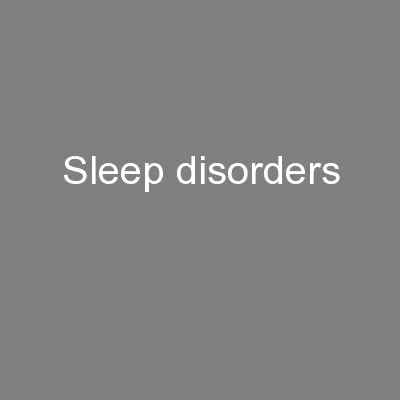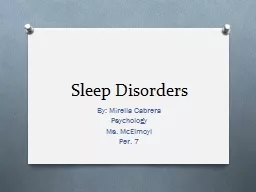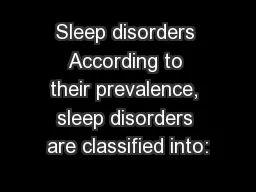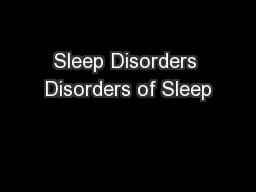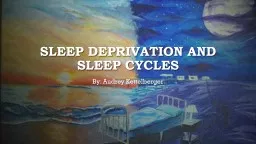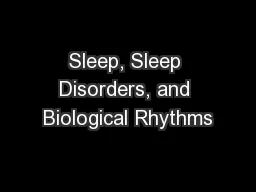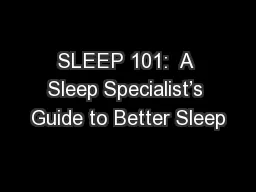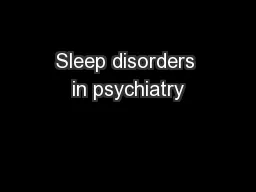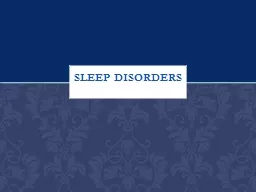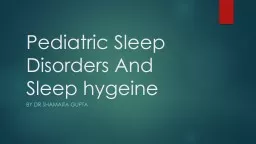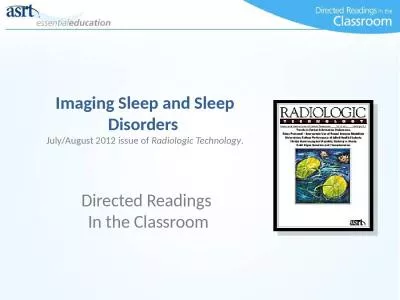PPT-Sleep Disorders 101
Author : tatyana-admore | Published Date : 2016-07-15
Why cant I sleep like I used to Beth A Malow MD MS Professor of Neurology and Pediatrics Burry Chair in Cognitive Childhood Development Director Sleep Disorders
Presentation Embed Code
Download Presentation
Download Presentation The PPT/PDF document "Sleep Disorders 101" is the property of its rightful owner. Permission is granted to download and print the materials on this website for personal, non-commercial use only, and to display it on your personal computer provided you do not modify the materials and that you retain all copyright notices contained in the materials. By downloading content from our website, you accept the terms of this agreement.
Sleep Disorders 101: Transcript
Download Rules Of Document
"Sleep Disorders 101"The content belongs to its owner. You may download and print it for personal use, without modification, and keep all copyright notices. By downloading, you agree to these terms.
Related Documents

